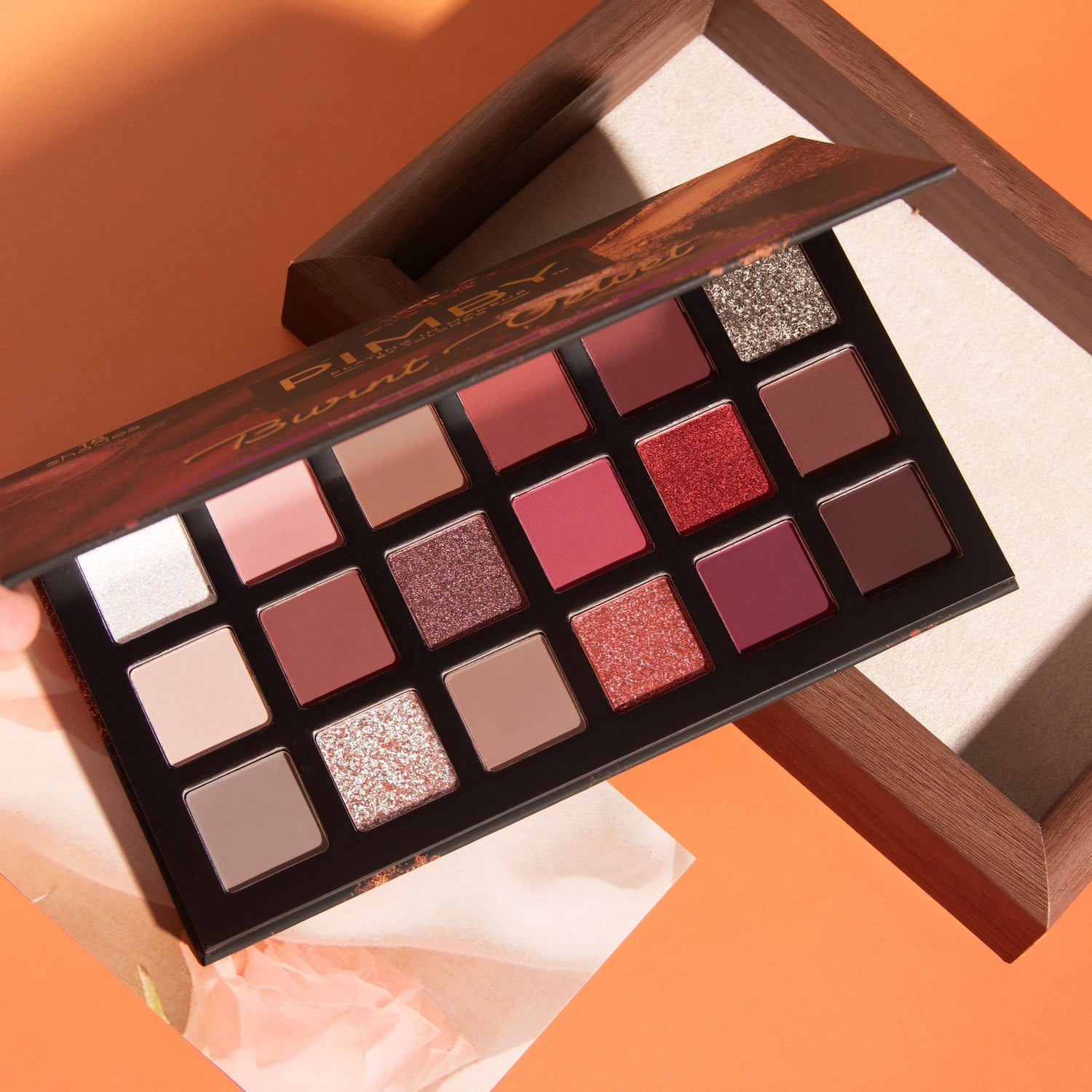All around the world, people use makeup to smooth out their skin, hide blemishes, and look flawless. One of those tools happens to be eyeshadow, something that has been indispensable for centuries. For instance, did you know that even the ancient Greeks and Egyptians used eyeshadow? Women from Greece wore an eyeshadow of blues and greens made from gems and minerals, such as lapis lazuli or malachite. From there, the custom has spread around the world.
These days, we have more and more colors available to us in gorgeous palettes. You might have a difficult time choosing eyeshadow swatches or may not understand why most eyeshadows come as a duo.
There are reasons for all these things, which we’re going to go over today. By the time you’re done, you’ll know how to navigate eyeshadow formulas and palettes like a queen.
Let’s get started.
5 Things To Know About Eyeshadow Palettes
Learn The Lingo
The first step to getting the most use out of your eyeshadow palette is to understand the lingo. That way, you can follow along with tutorials and will be able to navigate larger eyeshadow palettes with ease.
You have several parts of the eye and around the eye that can be colored with eyeshadow, including:
- Inner corner – by the tear duct
- Lower lash line – bottom eyelid
- Waterline – the skin above the lash line on the bottom lid
- Outer V – above the angle made by the upper and lower eyelid
- Upper lash line – lashes above the eye
- Lid – upper eyelid
- Contour/Crease – where the eyelid folds beneath the brow bone
- Highlight or brow bone – the area below the eyebrow
Many palettes have colors designated solely for different sections of the eye to help you blend and create a stunning look.
Choose The Right Formula
Not all eyeshadows are created using the same formula. Knowing the differences between the formulas will help you choose the right kind for your skin and skill level.
Cream eyeshadows are excellent for adding a base of color for powdered formulas. You can also use creams for a smoother single color and solid coverage.
Pressed eyeshadows are the most common kind. These are powdered, blend easily, and are not too messy.
Loose eyeshadows have stunning color pigmentation but are difficult to work with.
Palette Layout – Duos, Trios, Quads
Did you know that those palettes with two colors, three colors, four colors, or even five colors (and beyond) are arranged a specific way? The general guidelines for your eyeshadow palette layout are:
- Lightest color: Use this for highlighting the brow bone
- Second lightest: Apply this to the lid
- Second darkest shade: This is for your contour or crease
- Darkest color: Add it to the outer corner for a nice pop
So how does this work with duos? Well, the lighter color is the “light,” so it goes where you need highlighting, whereas the darker color is for definition.
When you have a trio of eyeshadow, the middle color is the one for the lid.
Quintets are great because you get a glittery highlight (in most cases), a pale shade for the inner lid, a slightly darker shade for the outer lid, a dramatic color at the center for lining the lash line, and a dark color for the inner corner. If we were talking about a blue palette, the final color might be brown or gold.
But keep in mind that these are just guidelines. You are totally allowed to bend or even break the rules, as long as you are happy with your look!

Choose Colors Based On Eye Color
Every one is unique. Eyes are no different. Although irises generally fall into blues, greens, and browns, there are people with two different colored eyes and other rare variants.
That said, most eyeshadow palettes are made with either your skin color or your eye color in mind—unless it’s an outrageous fun color. If your eyeshadow palette is for everyday use, then consider the following:
- Brown and Black Eyes: These eyes can have different depths, such as chocolates and amber and red. Dark shades with hints of red and purple, like burgundy, look luscious with these eyes. If you want something less dramatic, choose golds, warmer browns, earthen tones, and even bright blues and navy.
- Blue Eyes: If you want to make your eyes pop, choose pastels, like light blue or lavender. Golds can bring out hints of yellow and green in your eyes, while greens will add dimension.
- Green Eyes: Because greens are one of the rarest eye colors, you are going to want to really play up that asset! Peaches and golds are excellent for this, but you can add richness with darker browns or taupe.
Quality, Not Quantity
Everyone has seen it: the massive palette of eyeshadow that come around during holidays that are offered at discounted prices. Do you really think that those are healthy for your skin? Will they look nice with your skin tone? On a rare occasion! More often, you will see a 52-color palette with eyeshadow that looks good but has zero pigmentation. Some might have ingredients that irritate your skin and eyes.
Instead, focus on quality. Get a palette that has pigmented colors mixed with oils and powders that will keep your skin healthy. You also want to choose colors that mix with your complexion and eye color. Opt for a 12-color palette, since that gives you plenty of choices without overwhelming you with options.
Takeaway
Hopefully, you have learned something new about eyeshadow palettes to make choosing colors easier. Remember that you should try to accent both your complexion and your eye color! That will make the colors truly pop and give you that stunning look you want.


